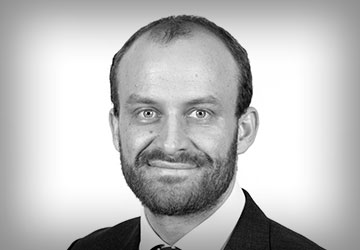News
Stop Press: The Spectre of Dishonesty
Dishonesty has always been that dirty word lawyers like to skirt around in litigation. There are professional obligations as to when and how its to be pleaded and, as we had previously understood, if it was not pleaded, we were unable to assert it.
ATB Sales Ltd v Rich Energy Ltd & Ors [2019] EWHC 1207 (IPEC) alters that general perception, suggesting as to when allegations of dishonesty may be put during oral evidence.
ATB, a bicycle designer, trading under the name “Whyte Bikes”, sought injunctive relief on grounds of copying infringement for the use of its logo by RE, an energy drinks manufacturer, on their Formula 1 Racecar and website. The logo contained a distinctive stags head drawn by ATB’s staff in 2008 within the course of their employment.
RE’s case was that its director, William Storey, the Second Defendant, had commissioned Staxoweb Ltd, a marketing company, owned by a childhood friend, the Third Defendant, to design a logo for their racing team in 2015. This same logo just happened to feature the iconic stags head.
All three defendants denied copying the image, asserting it was independently designed without knowledge of ATB’s logo (do Google both images if you get the chance – it is quite enlightening).
During the trial, ATB’s Counsel put to RE’s witnesses that their evidence had been dishonest.
During closing submissions, RE’s Counsel, cited CPR 16 PD 8.2 and Chancery Guide at 10.1 which require any allegation of fraud to be pleaded, as well as CPR 32.19(1), where parties are deemed to admit the authenticity of a document disclosed where no express challenge to it is made. He submitted it was not open to the Court to make a finding of dishonesty on the part of the Defendants’ witnesses as RE was not put on notice of the allegation and unable to answer it before trial.
Rejecting the assertion, HHJ Mellisa Clarke held at paragraph 27 –
“As long as the facts upon which an inference of dishonesty may be based are pleaded, if evidence emerges at trial which the Claimant considers sufficient that the court might properly find dishonesty, even though it was not able to plead it before trial, it must be put to the relevant witness so that he may answer it. It is only then that a court may properly be invited to, and may make, an evidential finding that such a witness was indeed dishonest. This is part of the court's ordinary adjudicative function. In this case, the facts from which dishonesty may be inferred are clearly set out in the pleadings and arise from the cause of action. The Claimant pleads that the Defendants have copied C's Device, and the Defendants deny any familiarity with the Claimant or C's Device and deny copying it. It is for the court to sift and evaluate the evidence to determine the case. The court's hands will not be tied in the manner that the Defendants seek, by the fact that dishonesty has not been pleaded.”
Personal injury lawyers will find the case not too surprising given the line of authorities on the ability to assert an unpleaded allegation of fundamental dishonesty in order to displace qualified one-way costs shifting, most prominently in Newey LJ’s judgment in Howlett v Davies [2017] EWCA Civ 1696
The judgment is a common sense solution to the practical problem of the ever changing shape of a case, which will often alter in appearance long after pleadings have been settled. So long as a witness has the opportunity to respond to an allegation of dishonesty, properly put to them, where there is evidence of dishonesty to support a finding of the same, it may be raised despite an absence of pleading


